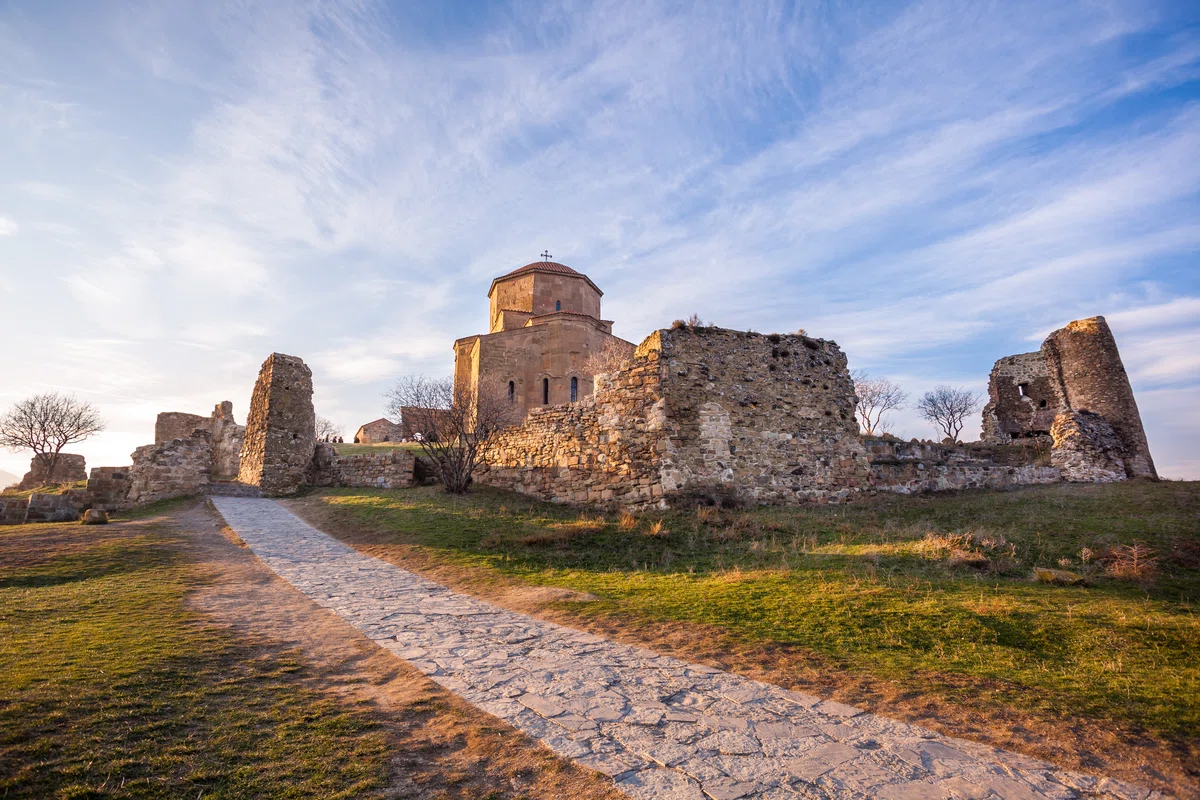
Religious pride of Georgia. The Presentation of the Lord in the Temple of Jvari. The history of the temple. What the Georgian monastery and temple of the first half of the 7th century looks like.
Religious tourism is gaining great popularity in Georgia, because there are a huge number of ancient churches and temples here. In the blog "MadLoba" you will find full information about the Jvari temple. There is a detailed video here about how you can meet the Presentation of the Lord in this temple, its incredible architecture is shown
Visit the religious pride of Georgia⬇️
- 1. The history of the temple
- 2. The architecture of the temple
- 3. Facades of the temple
- 4. The inner space of the temple
- 5. Tromps
- 6. The Feast of the Presentation of the Lord in Georgia
- 7. The ancient tradition of Georgians on the feast of the "Presentation of the Lord"
- 8. Tsminda Sameba Monastery
- 9. Photo locations of attractions
- 10. The legend of the appearance of the Aragvi and Kura rivers
Jvari - translated as "cross", the famous temple of the 7th century on a mountain near the city of Mtskheta, 21 kilometers from the city of Tbilisi.
Jvari, the most important monument of Georgian medieval architecture, has been one of the most important spiritual and pilgrimage centers of the Christian Caucasus for centuries.
History of the temple
The temple was built on the very spot where, at the beginning of the 4th century, the enlightener of Georgia, Saint Nino and the first king of Christians, Mirian, erected a large wooden cross. The Jvar cross in one of the later versions has been preserved and now stands in the Trinity Cathedral. In 2009, a new cypress cross was built in the Jvari temple, five times the size of the previous one.
In general, there is a story about three worship crosses on Mount Thoti, in Ujarma and Jvari. The details of this event, including the miracles associated with the third cross, are described in the life of Saint Nino in a fragment of the establishment of three crosses. I recommend to get acquainted.
Architecture of the temple
Erected at the turn of the 6th-7th centuries by the supreme ruler of Kartli, Stephanos Patrick, the Church of the Holy Cross belongs to the architectural type of Tetraconch, complicated by additional rooms.
The word "tetraconch" in translation means four shells, "tetro" - four, "conch" — a shell.
Tetraconch is a type of central—domed temple, representing an equilateral cross with a dome in the middle. The shells mean the rounding at the ends of the cross. In scientific terms, these semicircular parts in the plan of the room are called apses.
The appearance of the temple is strict, calm and makes a majestic impression. The level of technical performance is very high. The walls are lined with beautifully hewn sandstone tiles.
It should be noted the organic connection of the temple with the surrounding nature, the proportions of the height of the temple and the mountain that it crowns are unmistakably found. Because of this, there is an impression of their inseparable unity. They represent, as it were, parts of a single organism.
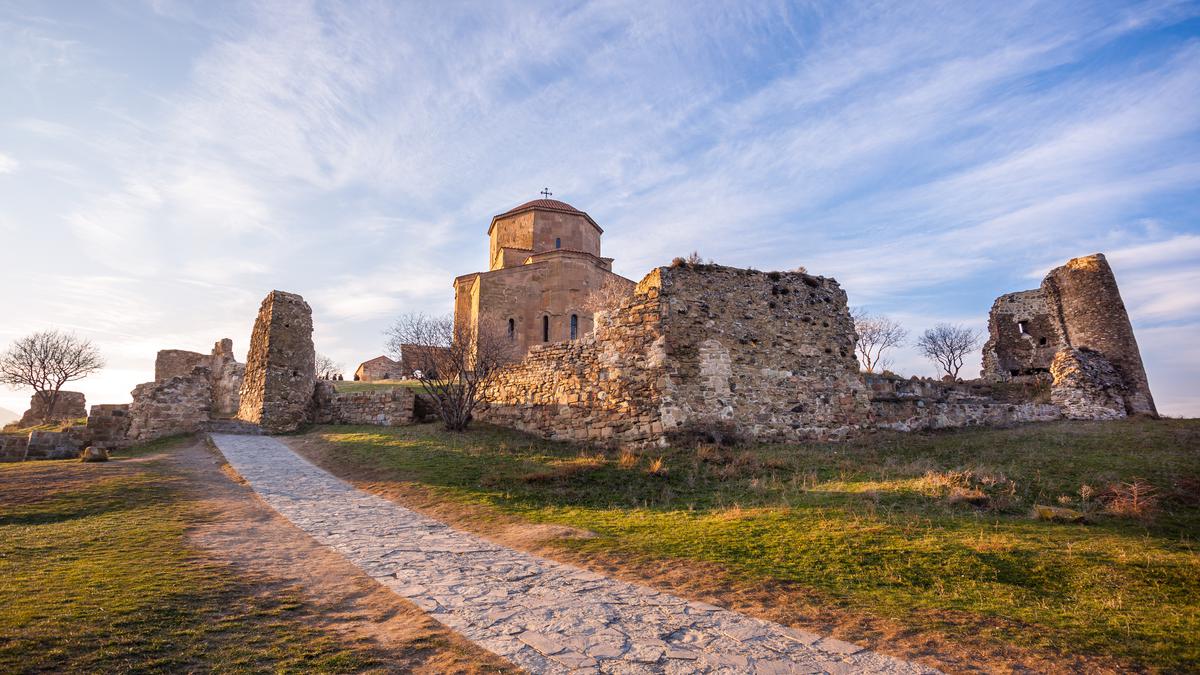
Facades of the temple
The composition of the facades is deeply thought out, the development of each of them corresponds to their functions and meaning. The eastern facade is especially interesting. There are three windows on the triangular ledge of the altar apse, one on each side. Above each window there is a relief arched pommel connecting the window openings. In addition, above the three central windows there are relief images of the rulers: Stephanos, Demetrius and Adarnase. Highlighting the most important part of the building, the altar apse, they, together with the windows and window hangings, connect the entire facade into a single whole.
There are inscriptions made directly by the builders. There are four of them and they are all numbered from left to right:
● The first is the inscription above the southern entrance: "Cross of the Savior, have mercy, Stefanos Patrikoz Kartli". Stephanos is usually understood as King Stephen I.
● On the eastern apse there are inscriptions 2, 3 and 4, and the texts of these inscriptions are as follows: "Saint Michael the Archangel, have mercy, Demetrius Ipatos",
● "Saint Gregory the Archangel, have mercy, Adarnassus Ipatos",
● "Saint Stephen, have mercy, Stephanosa".
The font used to write these inscriptions is called "Asomtavruli".
The composition of the "Ascension of the Cross" is placed in the tympanum of the southern facade, and the figure of an unknown person, possibly the architect, is carved on the edge of the dome drum.
If you go inside, the first thing that catches your eye is a certain elevation in the center of the temple, on which there is a cross. There is an opinion that this stone elevation is significantly older than the temple itself and has been preserved almost since the time of Saint Nino.
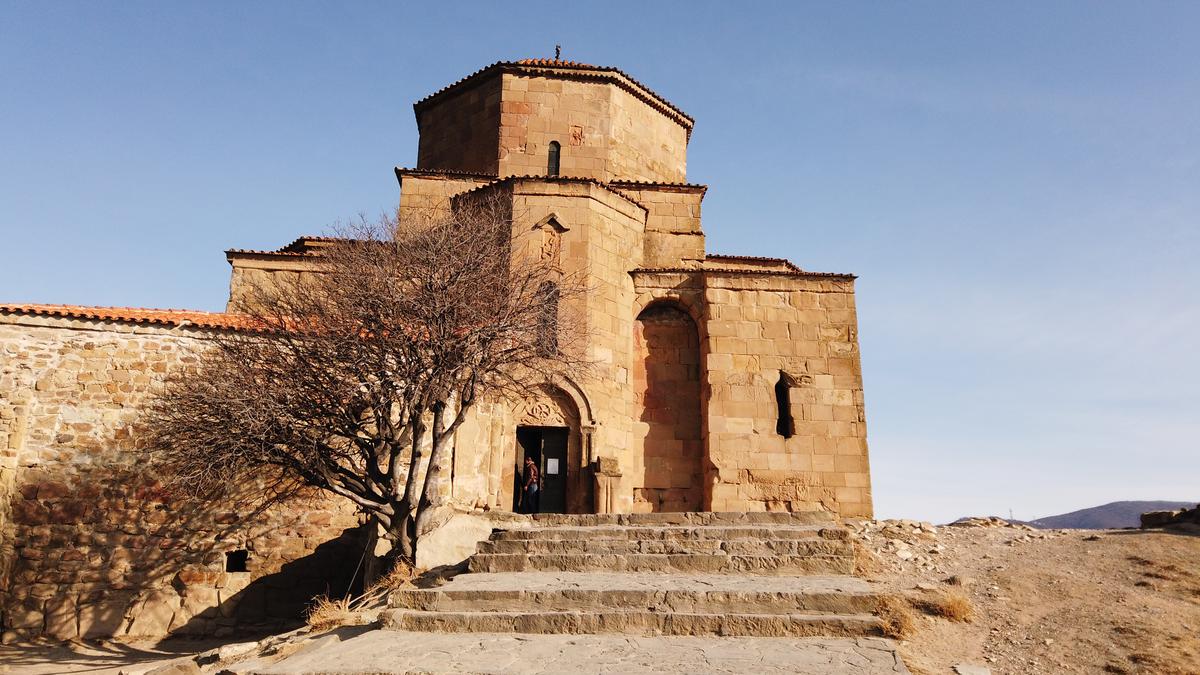
The inner space of the temple
The inner space of the temple is balanced, calm, majestic. The ratios of the parts of the proportions are harmonious.
Tromp
Something about tromps. Very old temples are interesting because they lack some of the classical elements familiar to us. They haven't been invented yet.
For example, it is worth paying attention to how the dome square turns into the octahedron of the dome. An arch is built from the arc of one apse to the arc of the other, and the dome rests on this arch.
In science, such an arch is called a tromp.
Feast of the Presentation of the Lord in Georgia
We visited Jvari on February 16, Sunday. We got to the feast of the "Presentation of the Lord", one of the most revered Orthodox holidays. Candlemas is joyfully celebrated in all Orthodox churches, including the Georgian one.
Georgia adopted Christianity much earlier than Russia, back in the 4th century. Therefore, some customs and traditions that can be observed in Georgia date back to ancient Christian times.
In Georgian, the feast of the "Presentation of the Lord" is called "Mirkma", translated into Russian it means "embrace". According to the Gospel, the God-child Christ was to receive into the arms of the righteous Semion, the elder who predicted their future to the savior and the Mother of God.
Another Georgian name for "Candlemas" is "Svimonoba", that is, St. Simeon's Day.
On the day of the "Presentation of the Lord", many Georgians try to attend the divine service in order to receive communion and to take part in the ancient tradition.
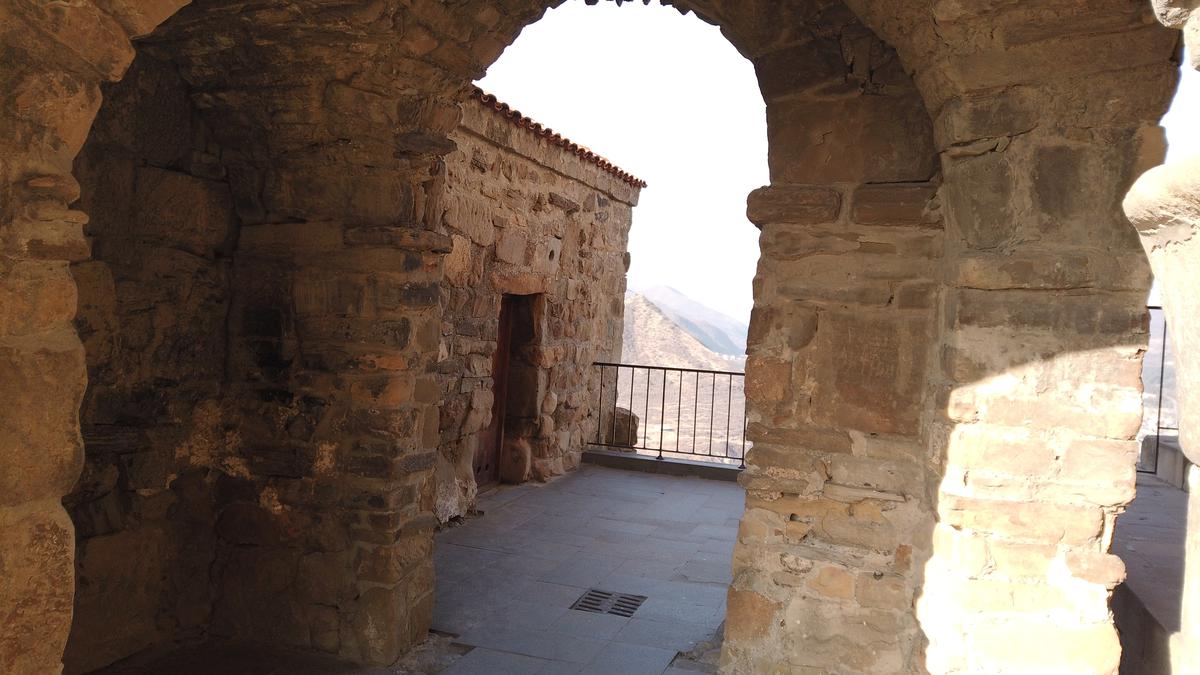
An ancient tradition of Georgians on the feast of the "Presentation of the Lord"
On the feast of the "Presentation of the Lord" before the liturgy, candles are consecrated in Georgian churches. Georgians either make these candles at home themselves, or buy them in the temple and then give them for consecration.
The custom of consecrating candles for the "Presentation of the Lord" has been preserved in the Georgian church since ancient times, when Christianity was just emerging and everywhere coexisted with paganism. In early February, ancient idolaters celebrated the passing of winter and the beginning of spring by performing dubious rituals, some of them taking place at night. Christians, wanting to prevent this, took lighted candles and walked around the streets of the city singing prayers. Such processions with candles symbolically indicated that Christ had conquered the darkness of paganism and the light of the gospel should now shine everywhere.
In modern Georgia, solemn processions with candles are not practiced, but the custom associated with them has been preserved.
After the liturgy, Orthodox Georgians visit the graves of their deceased relatives, part of the way they go with lighted candles. The burial places are cleaned, put in order, and then consecrated Candlemas candles are stuck into the grave mound with a prayer for the enlightenment of the souls of the deceased by the light of God's grace.
Another Georgian name for the feast of the Presentation of the Lord is "Amparia" or "Day of Lighted Torches" — this is also a remnant of the ancient tradition of night peasant processions with candles. "Amparia" is observed today only in villages. After dark, all the villagers gather together and bring one log with them. A common festive bonfire is formed from logs. The villagers sit next to him, dance, and are treated to national dishes. Then competitions are held to see who will throw the lit torch next. Georgians believe that whoever throws the torch further than the others will receive a special blessing from the Lord.
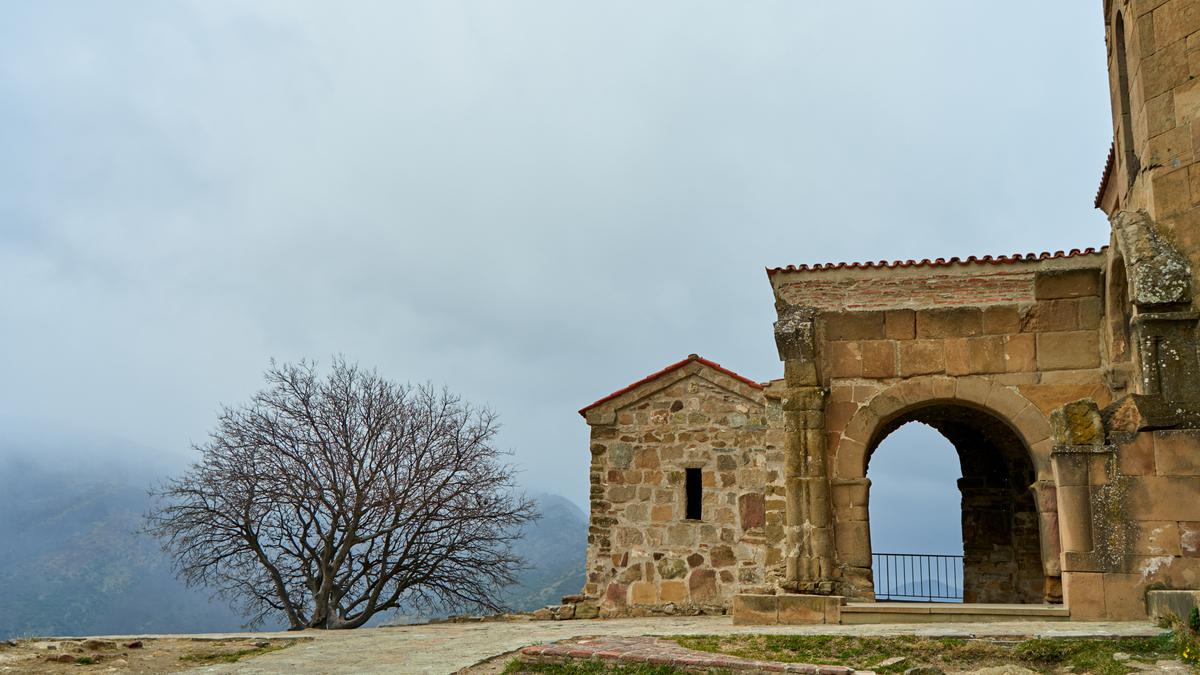
Tsminda Sameba Monastery
According to the church calendar, the holiday is celebrated on February 15, this is the first day of the pre-celebration and February 16 is the first day of the celebration, what is it? These are the days after the holidays, in which prayer and chanting are used at the divine service. But on February 15, we were at the monastery of Tsminda Sameba, where Elijah II congratulated the faithful on the feast of the "Presentation of the Lord".
There were quite a lot of people at the service, including children, regardless of age, the children behaved very culturally.
In January 1989, worship was resumed in the church, and in 1992 the territory of the pioneer camp in the neighborhood was transferred to the church and cells were made there for the monastery. Now there is an asphalt road leading to the temple, but it was built recently. In past epochs, people climbed the path from Mtskheta to the temple. This trail still exists, it starts from the autobahn and climbs the mountain quite steeply, about in the middle of the trail there is a small grove and a spring. It is believed that it appeared through the prayers of Nino herself and that its water has useful properties. A chapel and a caretaker's house have now been built near the spring, there are several tables and a bench. Tourists rarely visit this place, so the main visitors are locals on weekends. In a dry year, the spring almost dries up and oozes drop by drop. The caretaker usually manages to collect a bottle overnight, so they pour water already from the bottle
It is believed that the water from the spring helps those who do not have children.
Photo locations of attractions
The temple is interesting to photograph both by itself and the surrounding landscapes. The most branded, most recognizable frame in Georgia is a photo of Mtskheta from the Jvari observation deck. From here you can clearly see the city itself, the Kura Gorge, the Aragvi Valley, Mount Bagineti and the Armazi settlement.
The most interesting thing is the confluence of the two rivers Aragvi and Kura. Aragvi is a perfectly clear turquoise river, the Kura is clay, brown. The place of their contact is like a watercolor diluted and mixed with a brush.
If you want to get such a frame, then try to get to Jvari in the morning, towards evening Mtskheta turns out to be against the sun and the main facade of the temple, the east, will also be in the shade. The temple was really very beautiful. It stood at the very top, and behind it there was a stunning view of the confluence of two rivers and the old capital Mtskheta.
The legend of the appearance of the Aragvi and Kura rivers
The unusual properties of Aragvi gave Georgians the basis for creating a beautiful legend about two sisters who fell in love with the same young man. One of them was dark-haired, the other was blonde. When the young man married a blonde, his sister stepped into the gorge, where a river with waters as dark as her hair was formed. After learning about the death of her beloved sister, the blonde girl could not bear grief and jumped into the abyss, subsequently a river with waters as white as her strands was formed there. And the guy rushed into the abyss after hearing the news of the death of his young wife. The Pshavskaya Aragvi River was also formed here.
According to this legend, musicians and artists, impressed by the type of fusion, have repeatedly mentioned this phenomenon in their works.
For example, the lines from Lermontov's "Mtsyri": "A few years ago, there was a monastery where two sisters, streams of Aragvi and Chickens, were embracing, embracing, like two sisters."
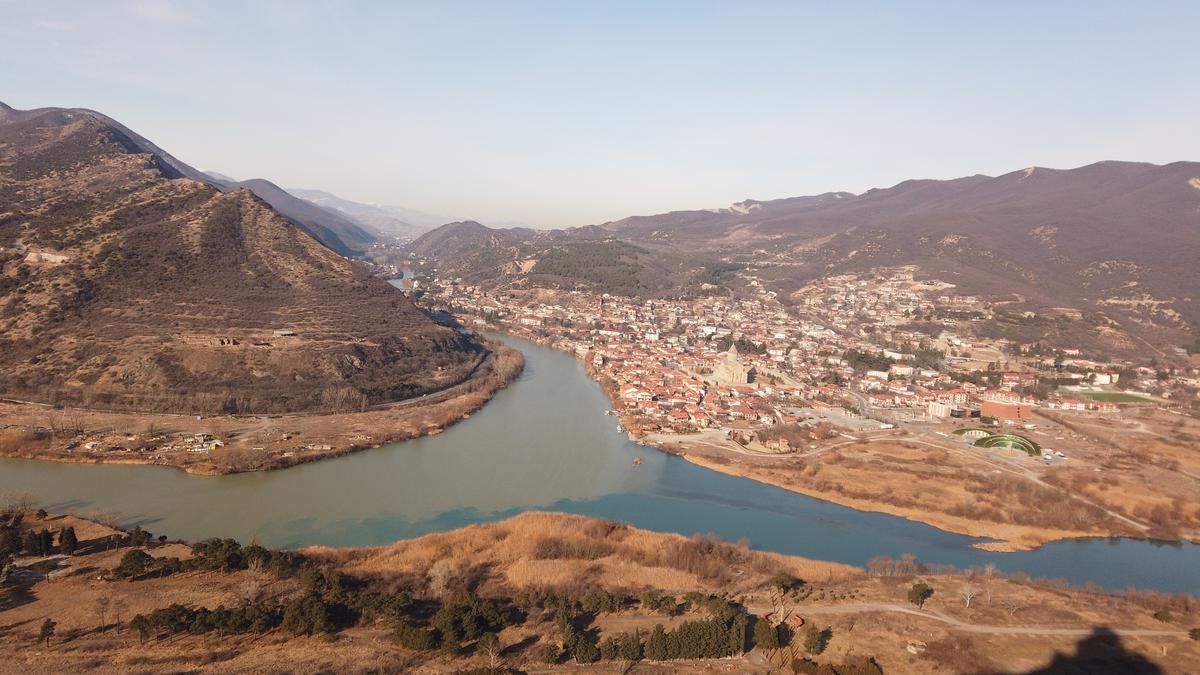






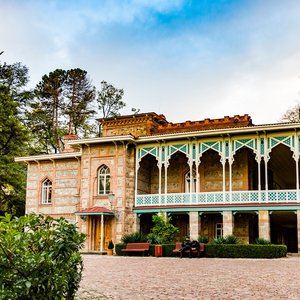







5 comments
Log in to leave a comment
В целом, статья достаточно полезна для тех, кто планирует посетить Мцхету и интересуется историей и культурой Грузии. Она может стать хорошим источником информации о местном празднике и главном храме города.
Это очень древний храм, дата его основания 7 век! Вы только представьте, что он видел и что пережил! Сам храм снаружи выполнен в строгом стиле, да и внутри все очень скромно и спокойно! Хорошо что в Грузии чтят подобные храмы, церкви, соборы, при реконструкции не нарушают их первозданный вид.